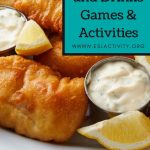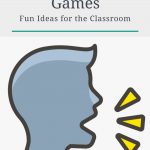If you’re looking for some of the best games and activities to describe people, you’re in the right place. We have more than 20 describing people games. Help your students learn how to use appearance adjectives correctly!
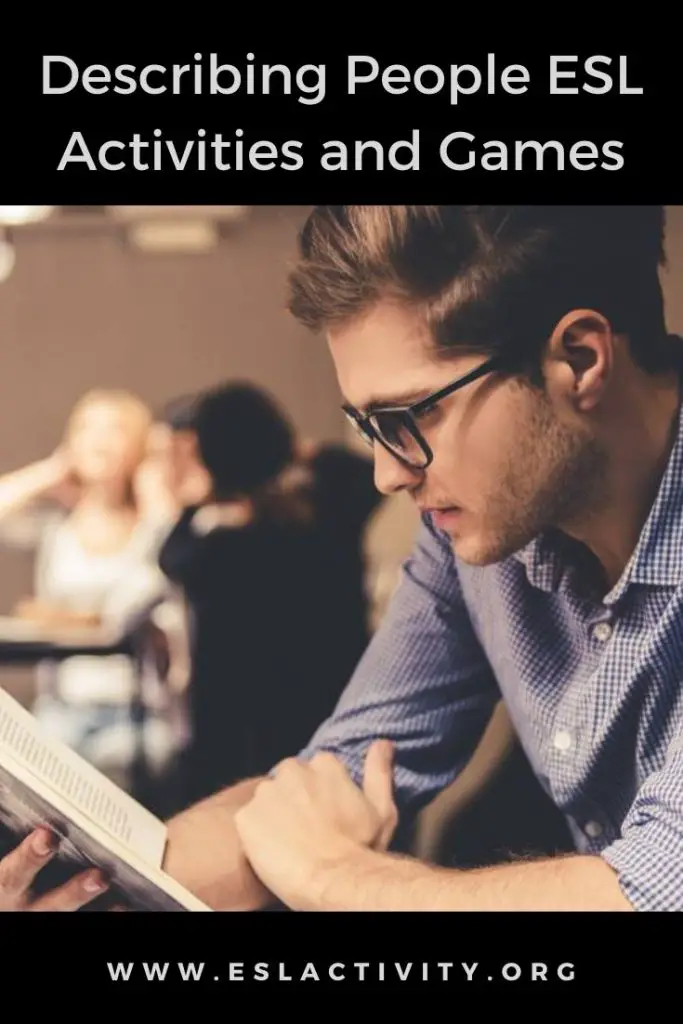
Describing people’s appearance ESL activities
Describing People’s Appearance ESL Activities
Let’s get into the people description games to try out with your students!
#1: Describing People Flashcards
When I teach kids, I almost never set foot in class without a set of flashcards. There are lots of good ones out there for describing appearance and also lots of different games you can play. Have a look here for some of my ideas:
#2: Word Association for Appearance Adjectives
Unless students are absolute beginners, it’s often the case that they already know a good bit of words that can be used to describe people. That’s why I like to use something like this word association activity. It helps students activate their prior knowledge before adding new words into the mix.
Or, use it as a review at the end of class, or the beginning of the next one. Learn more about this activity here:
#3: The Guess Who Game
- THE ORIGINAL GUESSING GAME: This edition of the Guess Who? game features classic tabletop boards, 24...
- INTERACTIVE GAME FOR KIDS: Kids can have loads of fun as they use yes or no question to guess each...
- CLASSIC GUESS WHO? GAMEPLAY: Remember playing the Guess Who? game when you were a kid? This guessing...
- UPDATED ART: This edition of the Guess Who? game features updated characters and character art not...
I love to have my students play this game when I’m teaching them how to describe people’s appearance. It’s a nice way to get some serious practice!
#4: The Password Game for Describing People’s Appearance
In this game, people have to describe a secret word to one of their teammates. It could be something like a mustache. They could say hair on the face, under the nose. The person has to guess what it is. Learn more about it here:
#5: Describing People ESL Speaking Lesson
It’s certainly possible to design your own lesson about almost anything, including describing someone’s appearance. There are a few simple steps to follow. Learn more here:
#6: Draw a Picture of Someone
For this activity, put students into pairs. Then, give one person in each pair a secret picture of a person. They have to describe that person to their partner who has to draw it. When they’re done, switch roles with another picture and do it again.
#7: Flyswatter Vocabulary Game
To describe appearance, I do a variation of this game. Generally, I only write the words on the board but for this unit, I put a picture of a person with a name. They have different hair colours and styles, eyes, some have glasses or earrings, etc.
Then, one person from each team comes up to the whiteboard and takes a flyswatter. I describe something, starting with more general clues. The first person to slap the correct person gets a point for their team. To avoid favouritism, I generally draw a name from a bag for each turn. Check it out:
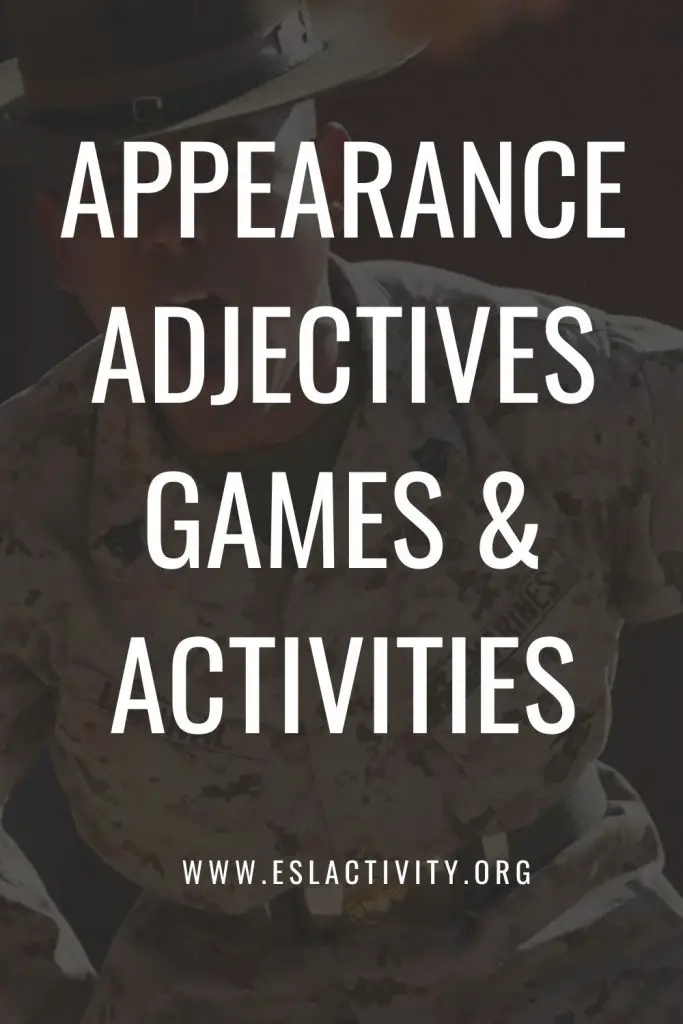
Appearance adjectives ESL activities and games
#8: The Secret Person
This is a nice people description activity. Make a collage with a bunch of different-looking people on it and each person can have a name or number associated with them. Then, put students into pairs. The first student secretly chooses one of the people and describes them. Their partner has to guess who it is.
#9: Use the Test-Teach-Test Approach
Unless students are absolute beginners, it’s likely that they already know a good bit of vocabulary that someone might use to describe people. If that’s the case, give them a test first to find out what they don’t know and tailor your lesson towards that! Learn more about this teaching method here:
#10: Appearance Videos
I sometimes get the feeling that my students get tired of hearing me talk! If that’s the case for you as well, why not let another teacher do the heavy lifting? There are lots of excellent videos on YouTube that teach students how to describe people. Have a look and I’m sure you’ll find something that’ll work in just a minute or two.
#11: Is that Sentence Correct?
To make a sentence describing someone’s appearance can be a little bit tricky. There is a certain order that things are said and it can be confusing with the is tall/has blue eyes thing. I use this activity to work on that! Have a look here:
Is that Sentence Correct Activity.
#12: Describe Someone in the Class
This is an activity to be a little bit careful with. I don’t love having students describe someone at the school that they go to because some of the meaner students can start to use negative words like fat, ugly, etc. I want to avoid this at all costs!
So, if you do decide to do this, use caution! I find the best approach is to have students write down their clues and the teacher can read them out and censor them if necessary. Or, the teacher can be the one to come up with the clues for their students.
#13: Me Too!
This is a speaking and listening activity for beginners. Students can make a true statement about their appearance (I have blue eyes) and if other people do as well, they can stand up and say, “Me too!” Learn more about it in this video:
#14: Find Something in Common
This is a nice activity to get students talking to their classmates about their appearance. They have to talk to a classmate to find something that is similar. For example:
- We both have brown eyes.
- Our hair is long.
- We both like wearing jeans every day.
More details here: Find Something in Common.
#15: Ball Toss Game for Describing How You Look
Write a bunch of questions in permanent marker on a beach ball related to describing appearance. For example:
- What colour hair (eyes) do you have?
- Do you have long or short hair?
- Describe your style.
- Do you wear glasses?
Then, students toss the ball around the class. Wherever their right thumb is when they catch it is the question that they have to answer. Check it out:
#16: Describing People Crossword Puzzle
I love to use puzzles to help my students review new vocabulary. It’s very easy to make your own with Discovery’s Puzzle Maker. I make my puzzle using clues like:
- It’s hair on the face, under the nose (mustache).
- This is a way to describe a person without hair on their head (bald).
- This is one of the more unusual colours of eyes (blue/green, it will be obvious based on the number of letters).
- You need these if you can’t see well (glasses).
#17: Word Challenge Whiteboard Race
Have students line up, in teams at the whiteboard. Give hints about an appearance adjective (it’s hair on your chin) and students have to race to write the correct word (beard). Then the next people go and the game continues!
#18: Find Someone Who Bingo
This is something that I often use as an icebreaker but it’s a nice activity for describing people as well. Students have to fill up their board with things like:
- has brown hair
- has blue eyes
- is tall
- has a mustache
- etc.
Then, they have to go around the class asking questions to their classmates, trying to fill in their boards. Check it out:
#19: Mixed Up Sentences for Describing How People Look
Word order to describe appearance can be a little bit tricky. That’s why I like to work on this with my students. Write some sentences but mix up the words. Students have to work together to make grammatically correct sentences. Find out more about it:
#20: Dictogloss
Dictogloss is a challenging listening activity for higher-level students. Find, or write a passage describing one or two people’s appearances. Put students into pairs and read it out at a faster than normal pace. Students have to take notes and with their partners, try to recreate what they heard. Repeat the process and then students compare what they have with the original. They can do a quick sketch of the people as well!
#21: Running Dictation for Appearance Adjectives
Try out this challenging 4-skills ESL activity if you want to have some fun with your students! Make a conversation with a lot of the target vocabulary to describe people’s appearances. Learn more about it:
#22: Dictation
I know, this is kind of an old-school activity but it does certainly have some value. It’s ideal for working on capital letters, punctuation and basic spelling and grammar. Dictate some sentences to the students who have to write them down.
- I have brown hair.
- Do you have long hair?
To level up the difficulty, get students to write the question for the statement and vice-versa. Find out more:
#23: Error Correction Relay Race
This is a nice activity that can be used to focus on meaning and forms. To focus on meaning, have a picture of the people you are describing and make some errors (long hair instead of short, for example). Then, have some mistakes with the forms as well (She is brown hair). Students have to work together to correct the mistakes. Find out all the details:
#24: Odd One Out
This is a simple activity that gets students to think in categories. List four words and students have to pick the one that is the odd one out and say why. Some examples:
- wrinkles, grey, white, ear (ear is the odd one out because the other ones generally describe an older person).
- beard, eyebrows, nose, mustache (nose because the other ones describe hair on the face).
Learn more about it:
#25: Appearance Adjectives Listening Lesson
It’s possible to plan a listening lesson for almost anything, including appearance adjectives. Check out the simple steps to follow in this video:
Describing People Worksheets
Here are some of my favourite people description worksheets to try out with your students:
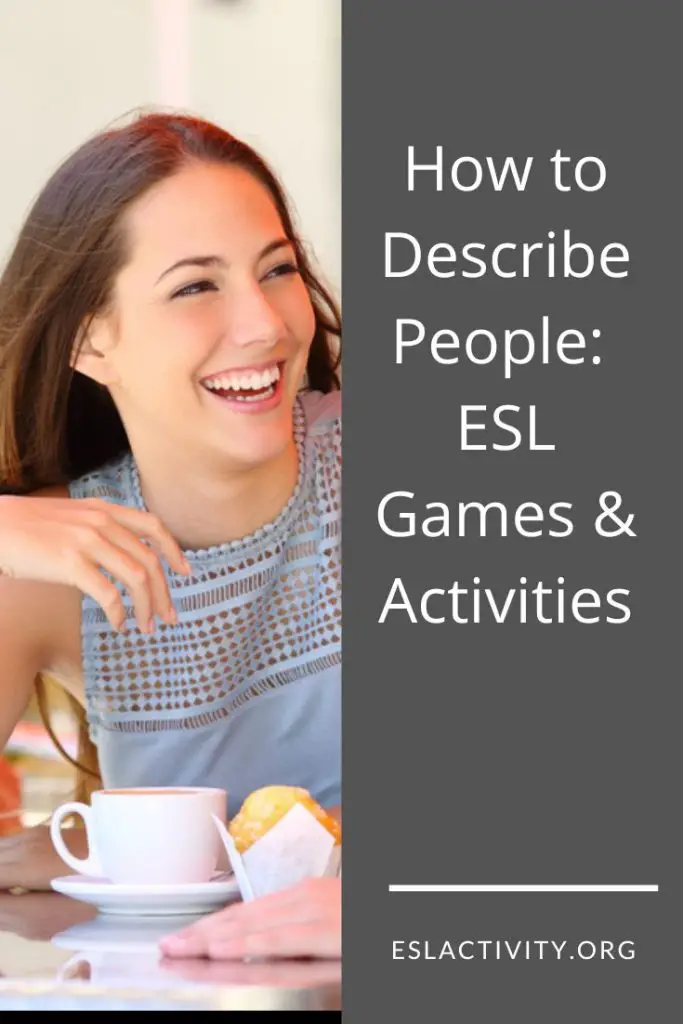
How to describe someone’s appearance
Describing People ESL Lesson Plans
Why reinvent the wheel, right? I love to use ready-made lesson plans whenever possible. Here are some nice options for appearance adjectives ESL lesson plans:
Appearance Vocabulary
Here’s a list of vocabulary words that can be used to describe people’s appearance:
Hair-related
- Short
- Long
- Curly
- Straight
- Wavy
- Bald
- Blonde
- Brunette
- Red-haired
- Gray-haired
Eye-related
- Blue-eyed
- Brown-eyed
- Green-eyed
- Hazel-eyed
- Almond-shaped eyes
- Round eyes
Skin-related
- Fair-skinned
- Dark-skinned
- Olive-skinned
- Tanned
- Pale
Facial features
- Oval face
- Round face
- Square jawline
- High cheekbones
- Thin lips
- Full lips
- Bushy eyebrows
- Thin eyebrows
- Freckles
- Dimples
- Wrinkles
-
Body-related
- Tall
- Short
- Average height
- Slim
- Thin
- Lean
- Muscular
- Overweight
- Stout
- Well-built
-
-
Distinguishing features
- Glasses
- Beard
- Mustache
- Sideburns
- Scar
- Tattoo
- Birthmark
- Piercing
Age-related
- Young
- Middle-aged
- Elderly
- Youthful
- Aged
- Mature
Overall appearance
- Attractive
- Beautiful
- Handsome
- Cute
- Elegant
- Stylish
- Charming
- Graceful
Need More Ideas for TEFL Lessons?
- Bolen, Jackie (Author)
- English (Publication Language)
- 68 Pages - 11/29/2015 (Publication Date) - CreateSpace Independent Publishing Platform (Publisher)
If you’re teaching vocabulary to children, then you’re definitely going to need a wide variety of games and activities! This book will help you get there in style: 39 ESL Vocabulary Activities for Kids.
Pick up a copy of the book today and get ready for better TEFL lessons tomorrow:
FAQs
There are a number of common questions that people have about teaching students how to describe someone’s appearance. Here are the answers to some of the most popular ones.
Why is teaching students how to describe someone’s appearance important in ESL?
Teaching students how to describe someone’s appearance helps them develop vocabulary and language skills to communicate effectively in daily life, describe people accurately, and engage in conversations about physical characteristics.
What vocabulary should I focus on when teaching students to describe appearance?
Focus on vocabulary related to physical attributes such as hair color, eye color, height, build, facial features (e.g., eyes, nose, mouth), and any distinguishing characteristics like scars or tattoos.
How can I introduce the topic of describing appearance to ESL students?
Start by introducing basic adjectives that describe physical appearance, such as “tall,” “short,” “thin,” “overweight,” “blonde,” “brunette,” “blue-eyed,” and “wavy-haired.” Use visuals and real-life examples to help students understand and remember the vocabulary.
How can I encourage creativity and detail in describing someone’s appearance?
Encourage the use of specific details and vivid language by asking students to provide more than just basic physical features. For example, prompt them to describe hairstyles, facial expressions, or clothing choices.
How can I assess students’ understanding of describing appearance in ESL?
Assess students through various activities, such as written descriptions, oral presentations, or comprehension tasks where they match descriptions to corresponding pictures.
How can I expand students’ vocabulary and encourage variety in describing appearance?
Introduce synonyms and alternative expressions for common adjectives. Provide word banks or reference materials for students to refer to when describing appearance.
Are there any cultural considerations when teaching students to describe appearance in ESL?
Be sensitive to cultural differences in beauty standards and appearance-related preferences. Encourage respect for diverse appearances and emphasize the importance of focusing on character rather than solely physical appearance.
Describing People’s Appearance: Join the Conversation
Do you have any describing people ESL games that you’d like to add to this list? Leave a comment below and let us know. We’d love to hear from you.
Last update on 2022-07-17 / Affiliate links / Images from Amazon Product Advertising API




